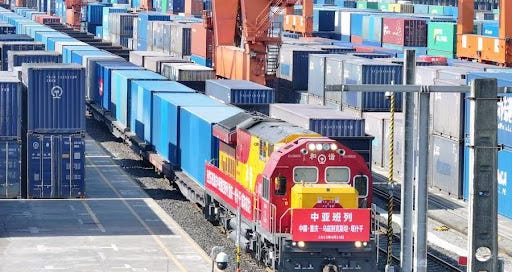China Constructs a Ring of Transport Influence
"The Ring of Transport Influence" is emerging as a key concept in the development of infrastructure across Eurasia.
China Is Building A Ring Of Transport Influence In Central And South Asia
By Nightingale Intelligence
China is actively shaping a ring of transport influence in Central Asia by developing an integrated infrastructure system that effectively weaves the region into the China–Pakistan Economic Corridor (CPEC).
Key elements of this strategy include the constru…





